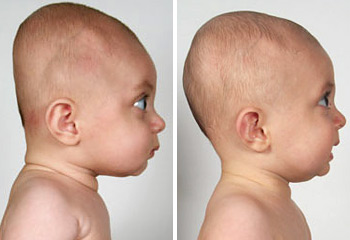Risk factors in severity of ''flat head syndrome'' in babies identified
 Washington, Mar 11 : Researchers from Hasbro Children''s Hospital and Children''s Hospital Boston have identified risk factors for the severity of asymmetrical head shapes, known as deformational plagiocephaly (DP), or more commonly as flat head syndrome.
Washington, Mar 11 : Researchers from Hasbro Children''s Hospital and Children''s Hospital Boston have identified risk factors for the severity of asymmetrical head shapes, known as deformational plagiocephaly (DP), or more commonly as flat head syndrome.
Many researchers have published reports of risk factors for the development of DP, which include supine positioning, firstborn infants, prematurity, developmental delay and others.
While these variables seem to be associated to some extent with the development of DP, the influence of each of those variables on the degree of asymmetry in DP has not been determined to date.
With this in mind, researchers from Hasbro Children''s Hospital and Children''s Hospital Boston developed a study to determine the relationship between predisposing factors for DP and the severity of the flattening.
The researchers looked at a number of factors in the infants as well as maternal variables associated with pregnancy. Of particular note in their findings is the severity of flattening was not associated with infant sleep position.
"We found a trend toward less flattening in infants who slept prone, or in positions that were alternated. Interestingly, however, while supine positioning has been a well established risk factor for the development of plagiocephaly, we were not able to demonstrate a logical correlation to indicate more severe flattening from the supine position," said Albert Oh, MD, who is also a professor of surgery at the Warren Alpert Medical School of Brown University.
Also, the researchers identified a relationship between gestational age and the severity of the flattening, where a lower gestational age was associated with more severe flattening.
Their findings also indicate that boys in the study had significantly more cranial asymmetry than girls, and their data also indicated that males are at a higher risk for more several flattening.
Also, the researchers found no association between the use of orthotic devices and the severity of cranial flattening, calling into question the effectiveness of the use of such devices in the treatment of or prevention of DP.
The researchers also found a link between multiple-birth pregnancies and the degree of cranial asymmetry.
"This study is significant because we were able to find direct correlations between a variety of variables and the severity of DP in infants. Ultimately we have shown that there are certain clear risk factors for more severe flattening in infants," Oh said.
The study was published in the March 2009 edition of the Journal of Craniofacial Surgery. (ANI)